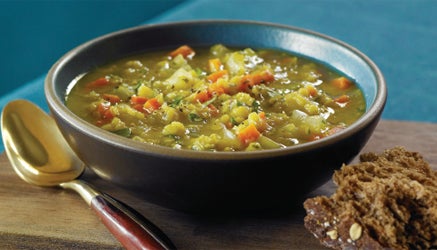Lentils

Just call lentils the little legumes that could. Soups, stews, salads, pâté, bread (check out the recipe for Ivory Lentil Pancakes), you name it, you can make it with these tiny, lens-shaped seeds. The thick, chewy texture of lentils makes them an ideal meat substitute in veggie burgers, pasta sauce, and chili. And without the soaking time required by recipes with other dried beans, most lentil dishesincluding the ones on this pageare ready in under an hour.
Nutritional Profile 1 cup cooked lentils contains:
230 calories
16 g fiber
18 g protein
7 mg iron
71 mg magnesium
358 mcg folate
LENTIL LEXICON
Beluga lentilsTaste and texture: Firm and chewy, these black lentils get their caviar-themed name because they glisten once cooked. Best in: Salads, brothy soups
Black lentils or black gram (Urad dal)Taste and texture: Small, strong-flavored black Indian beans; also available skinned and split into white lentils. Remain intact after cooking. Best in: Bean dishes
Brown lentilsTaste and texture: Most common lentil type; soft, slightly chewy texture and earthy flavor. Best in: Soups, stews, veggie burgers, chili
French green lentilsTaste and texture: These brownish-green lentils have a slightly peppery taste and stay firm when cooked. Best in: Salads, French and Italian dishes Red lentilsTaste and texture: Common ingredient in Middle Eastern and Eastern European cuisine; tender and mild, they break down to purée-like consistency when cooked. Best in: Thick soups, pâtés, spreads
White or ivory lentilsTaste and texture: Skinned and split black lentils; mild and soft. Best in: Soups, stews
Yellow lentilsTaste and texture: Usually sold split; slightly nutty flavor. Texture similar to red lentils. Best in: Thick soups, pâtés, spreads